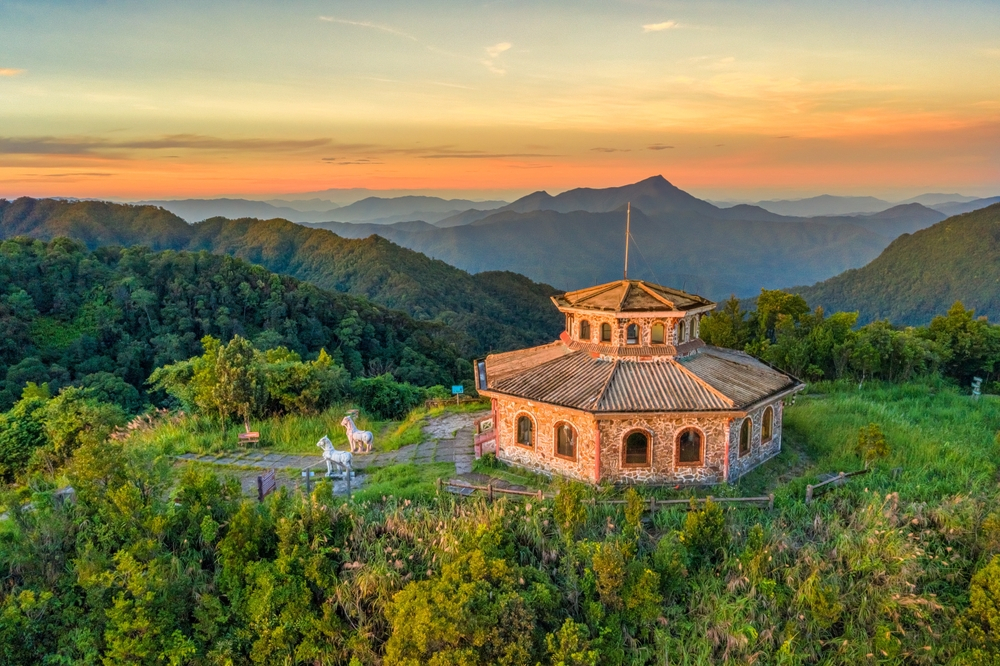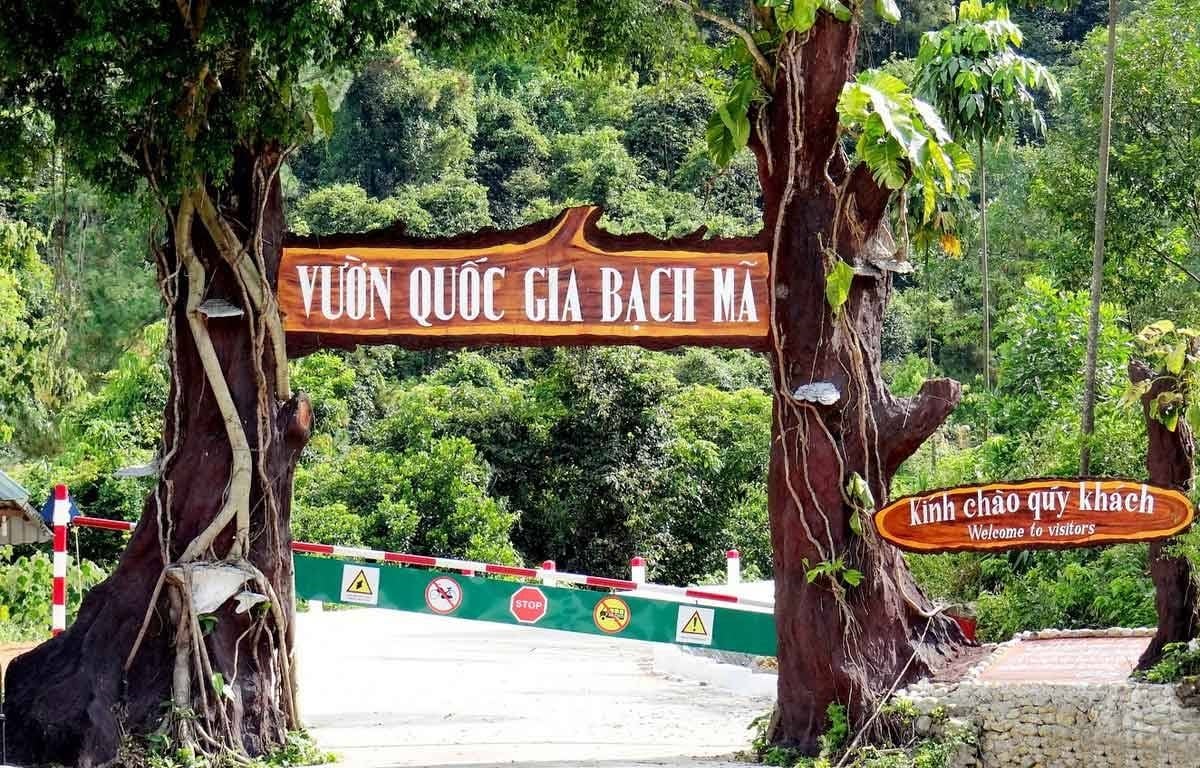A French-era hill station, Bach Ma National Park (Vuon Quoc Gia Bach Ma; 871 330; www.bachma.vnn.vn; adult 10, 500d/child 5500d/child under 5 free) reaches a peak of 1450m at Bach Ma mountain, only 18km from the coast. The cooler climate attracted the French, who started building villas here in 1930; by 1937 the number of holiday homes had reached 139 and it became known as the ‘Dalat of central Vietnam’.
Most of the visitors were high-ranking French VIPs. Not surprisingly the Viet Minh tried hard to spoil the holiday – the area saw some heavy fighting in the early 1950s. After independence from the French, Bach Ma was soon forgotten and the villas abandoned; today they are in total ruin and only a few stone walls remain.
Bach Ma has some stunning views across the coastline near Hai Van Pass, which the Americans used to their advantage: during the war, US troops turned the area into a fortified bunker. The VC did their best to harass the Americans, but couldn’t dislodge them. Between the eerie remains and memories of the American War, spooky stories abound among locals, who maintain that the park is a realm of ghosts.

In 1991, 22, 031 hectares of land were set aside as a nature preserve and designated Bach Ma National Park. Efforts are now fast under way to regenerate patches of forest that were destroyed by clear-felling and defoliation during the American War.
Forty-three species of mammal have been definitively recorded within the boundaries of the park, with a further 76 species, including tigers and leopards, potentially present. A recent victory in the wildlife stakes came with the discovery in 1992 of evidence of sao la, a previously unknown antelope-like creature whose footprints and horns were found. Two other animals were discovered in the late 1990s: the deer-like Truong Son muntjac and the giant muntjac. With enforced protection from poachers, there is hope that wild elephants, now restricted to the Lao side of the border, will return to seek the sanctuary of Bach Ma.
As most of the park’s resident mammals are nocturnal, sightings demand a great deal of effort and patience. Bird-watching is fantastic here, but you need to be up at dawn to get the best sightings. Of the 800-odd species of bird known to inhabit Vietnam, the park is home to some 330, including the fabulous crested argus pheasant and the tenacious Edwards’ pheasant – unseen and thought to be extinct for 50 years, it was recently discovered in the park’s buffer zone.

More than 1400 species of plant have been discovered here, representing a fifth of the flora of Vietnam. Among these, at least 430 species are medicinal plants, 33 produce essential oils, 26 are used for weaving and 22 bear edible fruit.
It was not until March 1998 that Bach Ma National Park began receiving visitors. Despite its tender age, the efforts of the park’s staff are laudable and they are hard at work protecting the area, working on community development with the ethnic minorities in the area and promoting sustainable ecotourism. Several young rangers here speak English well and there is an interesting display in the Visitor Centre, located at the park entrance. As well as plenty of natural-history information, there’s a huge crate of confiscated hunting tools, weaponry and the remains of a crashed helicopter. From here you can book village and bird-watching tours, English or French-speaking guides (150, 000d per day), and Russian jeeps (one way/return 200, 000/300, 000d) or 12-seater minibuses (one way/return 250, 000/400, 000d) to take you to the summit. Motorcycles and bikes are strictly prohibited.
Bach Ma is the wettest place in Vietnam, with the heaviest of the rain falling in October and November. With the wet weather come plenty of leeches. Still, even these months are not out of the question for visiting. The best time to visit Bach Ma is from February to September, particularly between March and June, for what’s likely to be the best weather.
